An early forged iron gothic domestic chamber clock movementUnsigned, German/Swiss, early to mid 16th century The two train movement with forged wheels, solid pinions and flanged winding pulleys incorporating English style sprung clicks to the great wheels, the three-wheel going train originally with verge escapement regulated by foliot balance, the single-arbor warnless strike train with nag's head lifting, shaped cam for overlift and flail locking, the countwheel mounted to the rear for the frame and driven via teeth cut to the inside of the rim, the frame constructed with riveted lap joints except the front two corner posts which are secured by pinned tenons to allow removal of strike detent and hammer pivot arbors, the upper and lower frame bars each forged in two sections joined by rivets at the rear corners, the right hand side leading edge with vacant potances and pivots for an alarm mechanism, the three central movement pivot bars also originally attached via pinned tenons with the front and back joined by a bar high above the movement to allow space for a foliate balance, the corners with spike finials and integral outstepped feet, (incomplete and with historic repairs/updates, missing items include motionwork, escapement, alarm, lines and weights), 34cm (13.5ins) high. Although perhaps a little agricultural in its appearance, on closer examination it can be seen that the present mechanism is fairly sophisticated in its design and construction. The frame in particular is efficiently designed to allow many variations of partial disassembly in order to facilitate servicing/adjustment of isolated parts of mechanism without disturbing other elements. The design of the strike train would have also been cutting-edge at the time of manufacture with nags-head lifting via starwheel behind the dial although the flail locking mechanism is perhaps a hangover from larger turret clock manufacture. Overall the layout and operation of both trains is technically very similar to chamber clocks made by the Leitchi family of Switzerland during the middle years of the 16th century (see Tardy LA PENDULE FRANCAIS, 3me Partie: Provinces et Etranger page 454). The size and proportions of the present movement are particularly pleasing which coupled with its inherent visual qualities and academic interest as a study-piece make it a worthy addition to any collection with an interest in early horology.
An early forged iron gothic domestic chamber clock movementUnsigned, German/Swiss, early to mid 16th century The two train movement with forged wheels, solid pinions and flanged winding pulleys incorporating English style sprung clicks to the great wheels, the three-wheel going train originally with verge escapement regulated by foliot balance, the single-arbor warnless strike train with nag's head lifting, shaped cam for overlift and flail locking, the countwheel mounted to the rear for the frame and driven via teeth cut to the inside of the rim, the frame constructed with riveted lap joints except the front two corner posts which are secured by pinned tenons to allow removal of strike detent and hammer pivot arbors, the upper and lower frame bars each forged in two sections joined by rivets at the rear corners, the right hand side leading edge with vacant potances and pivots for an alarm mechanism, the three central movement pivot bars also originally attached via pinned tenons with the front and back joined by a bar high above the movement to allow space for a foliate balance, the corners with spike finials and integral outstepped feet, (incomplete and with historic repairs/updates, missing items include motionwork, escapement, alarm, lines and weights), 34cm (13.5ins) high. Although perhaps a little agricultural in its appearance, on closer examination it can be seen that the present mechanism is fairly sophisticated in its design and construction. The frame in particular is efficiently designed to allow many variations of partial disassembly in order to facilitate servicing/adjustment of isolated parts of mechanism without disturbing other elements. The design of the strike train would have also been cutting-edge at the time of manufacture with nags-head lifting via starwheel behind the dial although the flail locking mechanism is perhaps a hangover from larger turret clock manufacture. Overall the layout and operation of both trains is technically very similar to chamber clocks made by the Leitchi family of Switzerland during the middle years of the 16th century (see Tardy LA PENDULE FRANCAIS, 3me Partie: Provinces et Etranger page 454). The size and proportions of the present movement are particularly pleasing which coupled with its inherent visual qualities and academic interest as a study-piece make it a worthy addition to any collection with an interest in early horology.
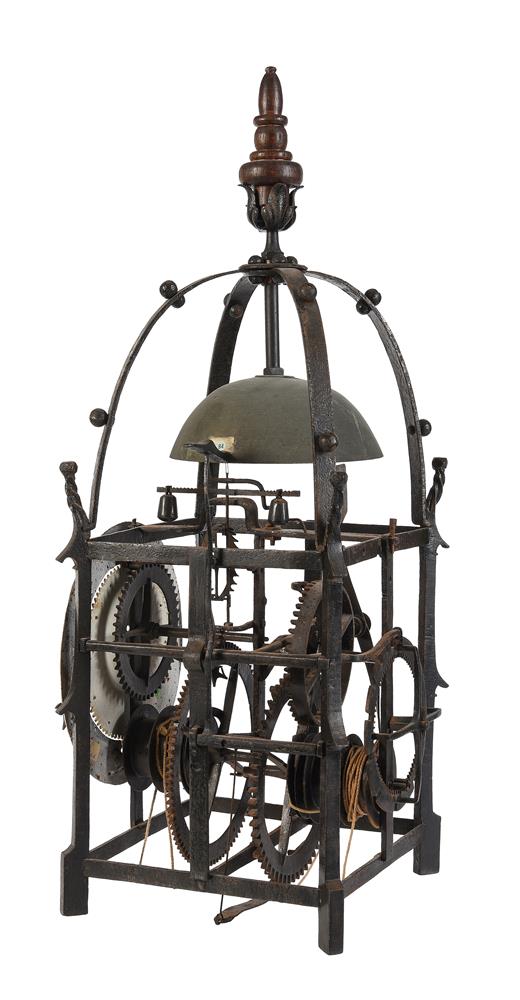
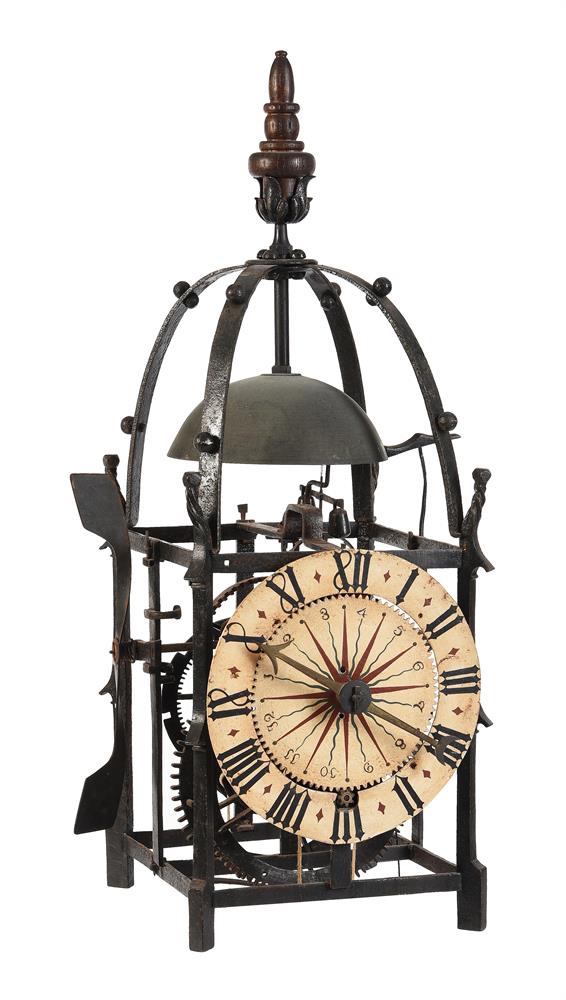

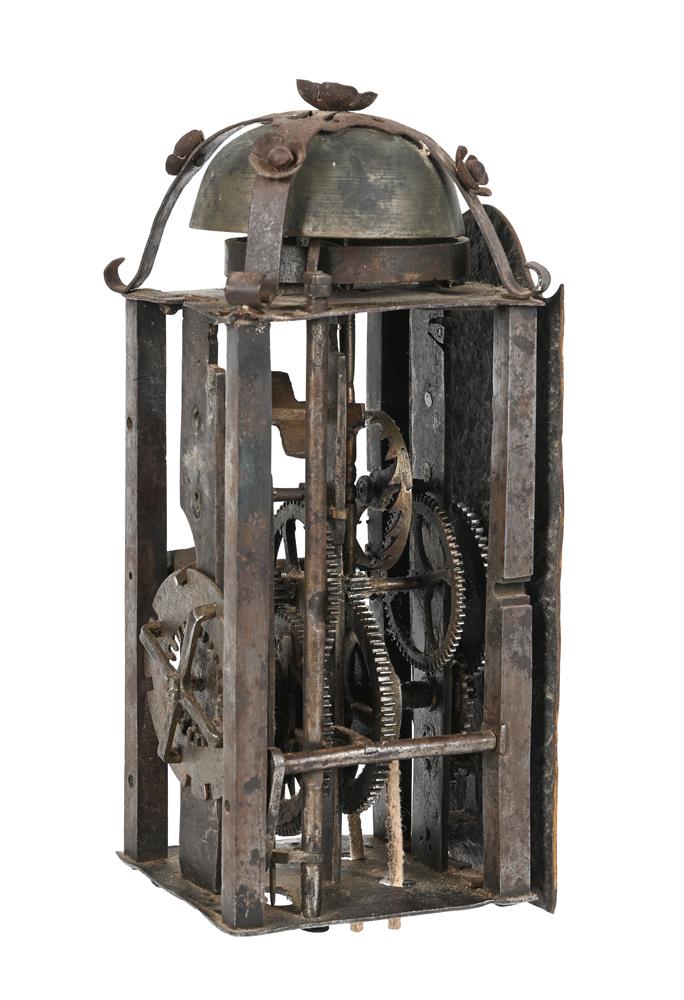

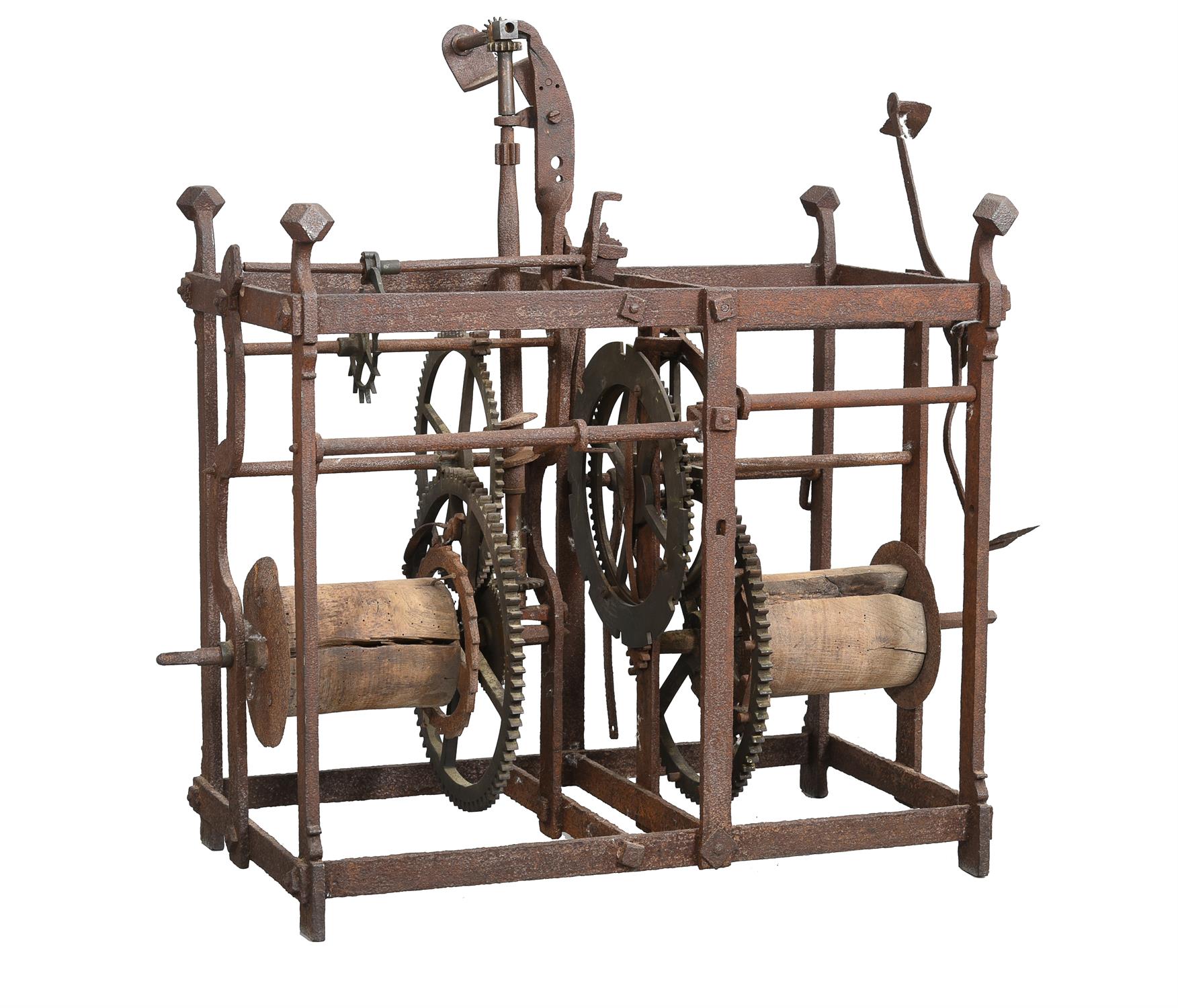
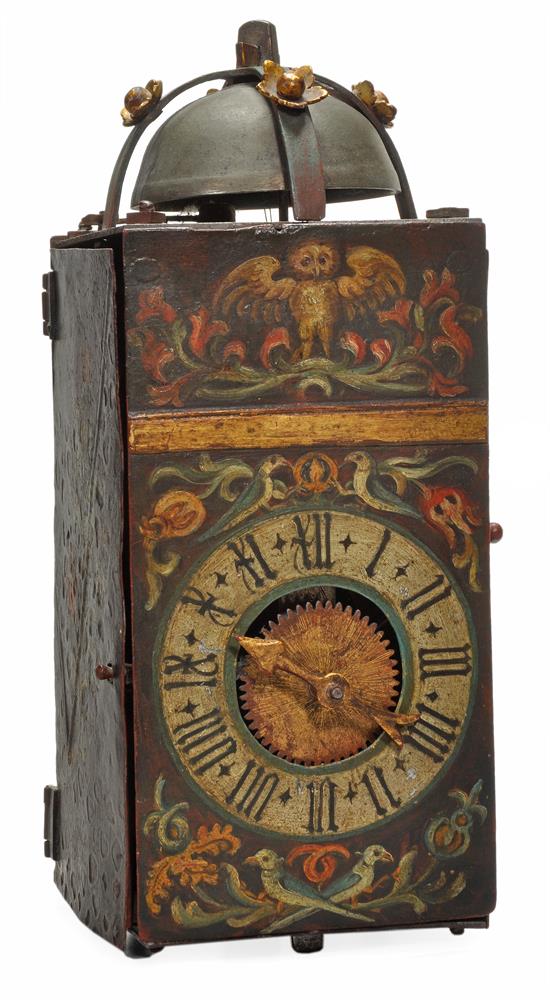




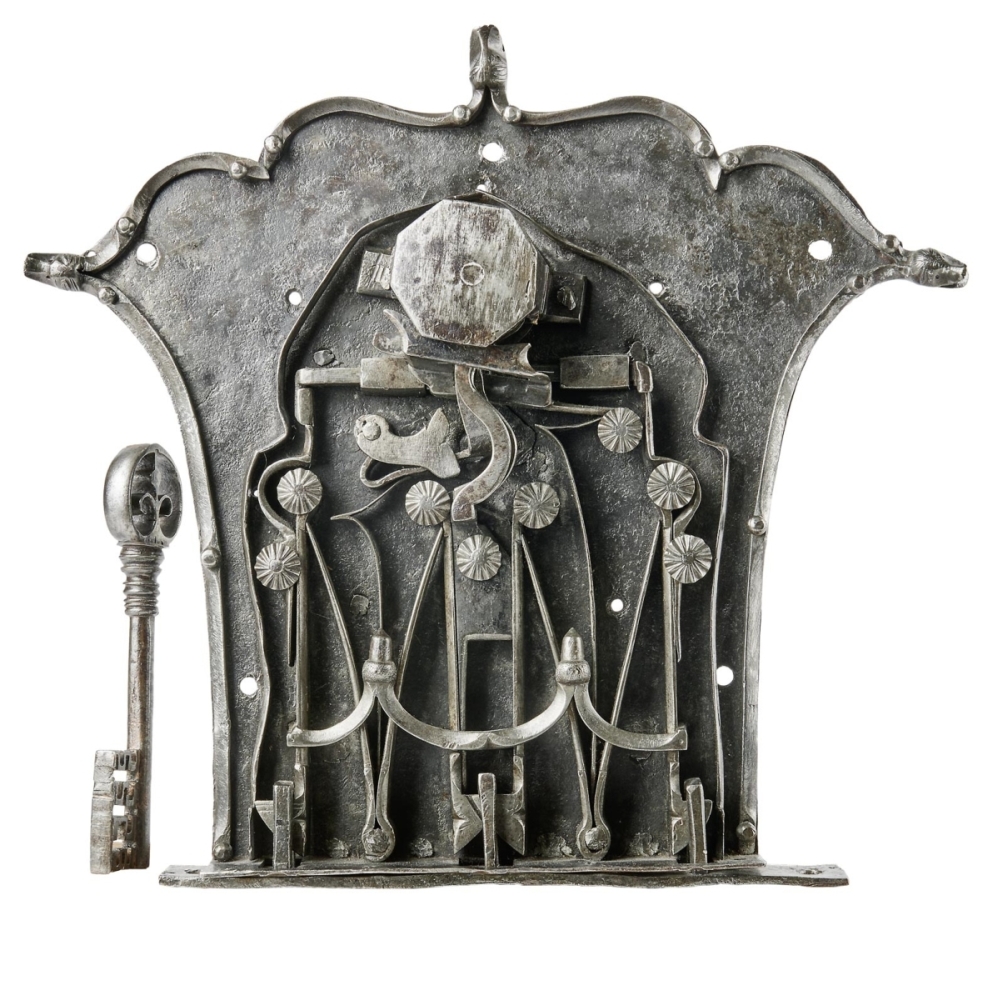

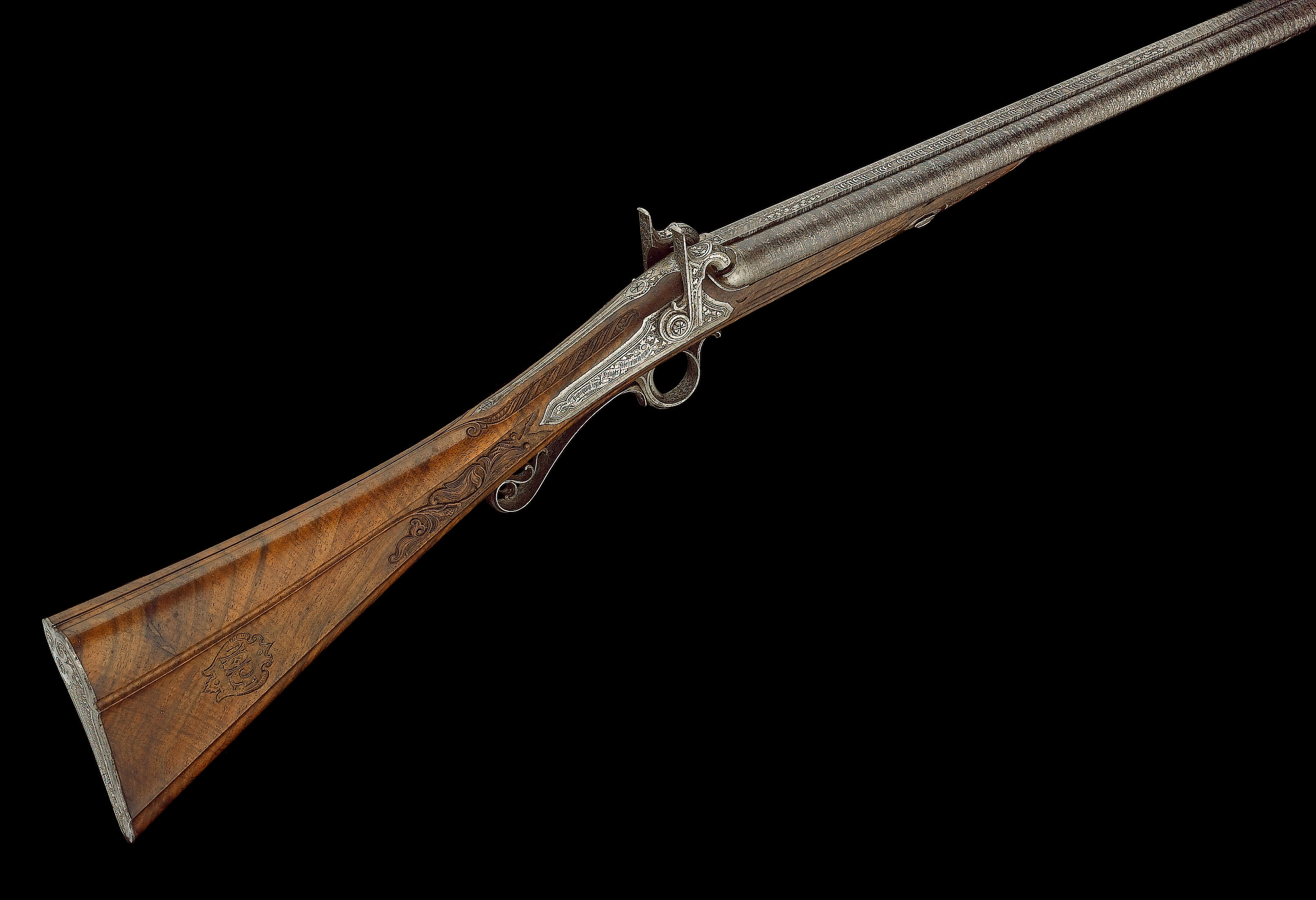

Testen Sie LotSearch und seine Premium-Features 7 Tage - ohne Kosten!
Lassen Sie sich automatisch über neue Objekte in kommenden Auktionen benachrichtigen.
Suchauftrag anlegen